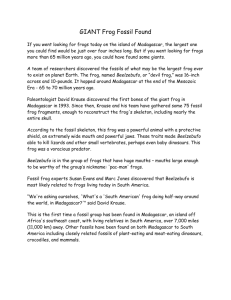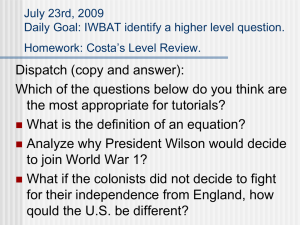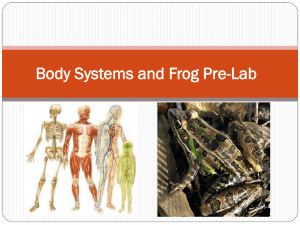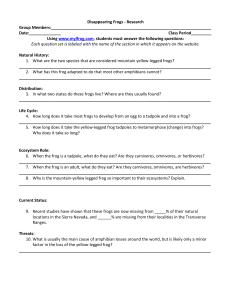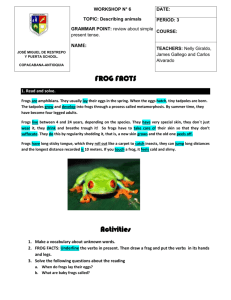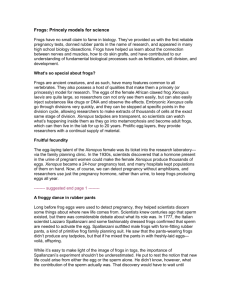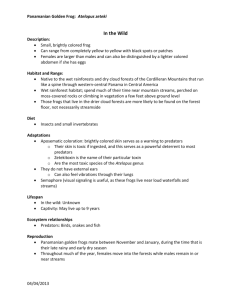Oocytecollectionxenopus - UCSF Animal Care and Use Program
advertisement
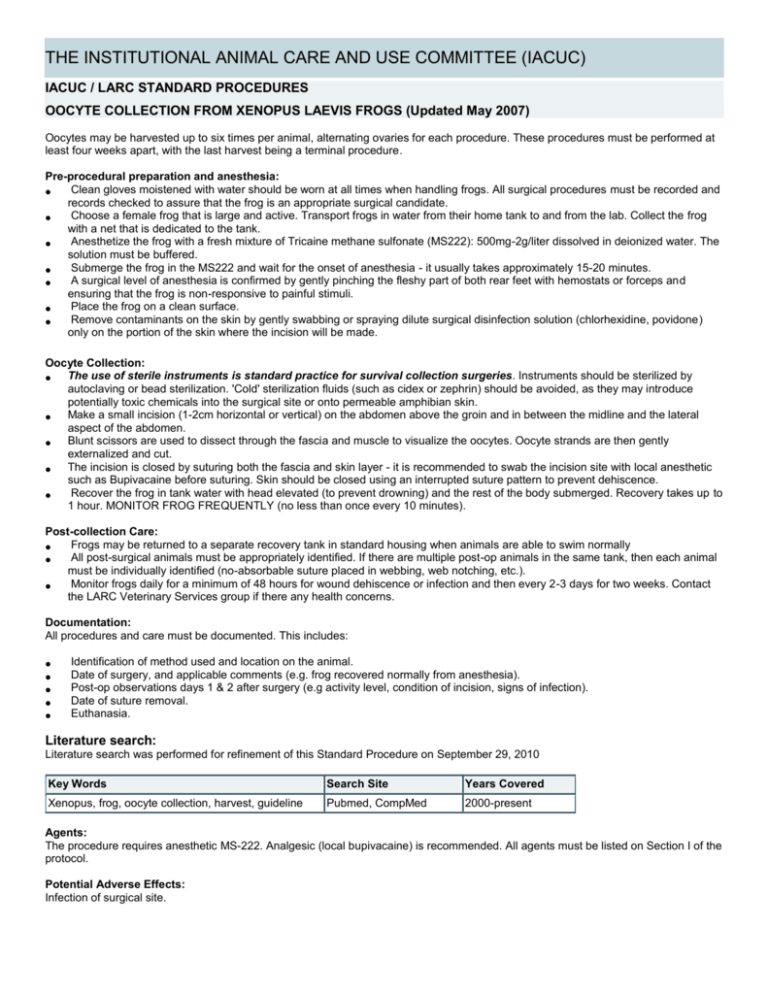
THE INSTITUTIONAL ANIMAL CARE AND USE COMMITTEE (IACUC) IACUC / LARC STANDARD PROCEDURES OOCYTE COLLECTION FROM XENOPUS LAEVIS FROGS (Updated May 2007) Oocytes may be harvested up to six times per animal, alternating ovaries for each procedure. These procedures must be performed at least four weeks apart, with the last harvest being a terminal procedure. Pre-procedural preparation and anesthesia: Clean gloves moistened with water should be worn at all times when handling frogs. All surgical procedures must be recorded and records checked to assure that the frog is an appropriate surgical candidate. Choose a female frog that is large and active. Transport frogs in water from their home tank to and from the lab. Collect the frog with a net that is dedicated to the tank. Anesthetize the frog with a fresh mixture of Tricaine methane sulfonate (MS222): 500mg-2g/liter dissolved in deionized water. The solution must be buffered. Submerge the frog in the MS222 and wait for the onset of anesthesia - it usually takes approximately 15-20 minutes. A surgical level of anesthesia is confirmed by gently pinching the fleshy part of both rear feet with hemostats or forceps and ensuring that the frog is non-responsive to painful stimuli. Place the frog on a clean surface. Remove contaminants on the skin by gently swabbing or spraying dilute surgical disinfection solution (chlorhexidine, povidone) only on the portion of the skin where the incision will be made. Oocyte Collection: The use of sterile instruments is standard practice for survival collection surgeries. Instruments should be sterilized by autoclaving or bead sterilization. 'Cold' sterilization fluids (such as cidex or zephrin) should be avoided, as they may introduce potentially toxic chemicals into the surgical site or onto permeable amphibian skin. Make a small incision (1-2cm horizontal or vertical) on the abdomen above the groin and in between the midline and the lateral aspect of the abdomen. Blunt scissors are used to dissect through the fascia and muscle to visualize the oocytes. Oocyte strands are then gently externalized and cut. The incision is closed by suturing both the fascia and skin layer - it is recommended to swab the incision site with local anesthetic such as Bupivacaine before suturing. Skin should be closed using an interrupted suture pattern to prevent dehiscence. Recover the frog in tank water with head elevated (to prevent drowning) and the rest of the body submerged. Recovery takes up to 1 hour. MONITOR FROG FREQUENTLY (no less than once every 10 minutes). Post-collection Care: Frogs may be returned to a separate recovery tank in standard housing when animals are able to swim normally All post-surgical animals must be appropriately identified. If there are multiple post-op animals in the same tank, then each animal must be individually identified (no-absorbable suture placed in webbing, web notching, etc.). Monitor frogs daily for a minimum of 48 hours for wound dehiscence or infection and then every 2-3 days for two weeks. Contact the LARC Veterinary Services group if there any health concerns. Documentation: All procedures and care must be documented. This includes: Identification of method used and location on the animal. Date of surgery, and applicable comments (e.g. frog recovered normally from anesthesia). Post-op observations days 1 & 2 after surgery (e.g activity level, condition of incision, signs of infection). Date of suture removal. Euthanasia. Literature search: Literature search was performed for refinement of this Standard Procedure on September 29, 2010 Key Words Search Site Years Covered Xenopus, frog, oocyte collection, harvest, guideline Pubmed, CompMed 2000-present Agents: The procedure requires anesthetic MS-222. Analgesic (local bupivacaine) is recommended. All agents must be listed on Section I of the protocol. Potential Adverse Effects: Infection of surgical site.




